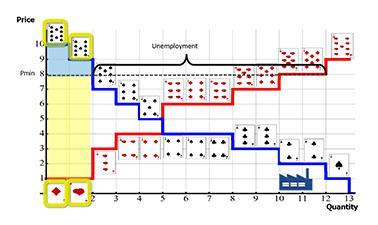MOOC List is learner-supported. When you buy through links on our site, we may earn an affiliate commission.

MOOC List is learner-supported. When you buy through links on our site, we may earn an affiliate commission.
This course follows a rigorous approach that combines visual arguments with realistic examples to help you connect core economic concepts with your own experience.
At the end of this course, you will be able to answer questions like:
- Why do most people in rich countries have a mortgage and why is it a problem that those in the developing world do not?
- Why is the environment one of the most challenging problems of modern societies?
- How could we estimate the economic impact of cannabis legalization?
- The only required knowledge is certain familiarity with graph reading and basic high school mathematics.
What you'll learn
- Basic tools of analysis in economics
- The model of perfect competition and its elements
- Elasticities and their applications
- Taxes, subsidies and government intervention
- Why markets fail and what to do about it:
- Market power
- Asymmetric information
- Externalities
- Public goods
Syllabus
Week 1: Introduction
Scarcity, opportunity cost, efficiency and equity, how are resources allocated in reality? Theories, models and assumptions. Model I of international trade: how countries trade what they have? Model II of international trade: how countries specialize? Some useful economic concepts.
Week 2: The Demand
The market. The model of perfect competition. Other market structures. The demand (I): Introduction. The demand (II): The unit-demand case. The demand (III): The general case. Marginal utilities. Market demands. Linear demands. Movements and shifts.
Week 3: The Supply
The unit-supply case. The costs. The general case. Movements and shifts. Elasticities (I): Definitions. Elasticities (II): applications.
Week 4: The equilibrium
Definition. The relevance of the equilibrium: logical and experimental support. Applications of the equilibrium (I): comparative statics. Applications of the equilibrium (II): welfare analysis. Measuring welfare. Estimating demand and supply in reality.
Week 5: Government intervention
Regulated prices. Taxes (I): classification. Taxes (II): analysis. Taxes (III): welfare. Taxes (IV): the incidence of a tax. Taxes (V): formal analysis.
Week 6: Market failures (I)
Introduction to market failures. Market power (I): definition. Market power (II): a model. Market power (III): welfare analysis. Market power (IV): comparative statics. Market power (V): barriers to entry. Market power (VI): solutions. Asymmetric information. Adverse selection. Moral hazard.
Week 7: Market failures (II)
Externalities (I). Classification of externalities. Externalities (II) Private solutions to externalities. Externalities (III) Public solutions to externalities. Public goods (I): definition. Public goods (II): analysis.
MOOC List is learner-supported. When you buy through links on our site, we may earn an affiliate commission.
MOOC List is learner-supported. When you buy through links on our site, we may earn an affiliate commission.
